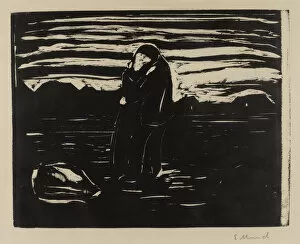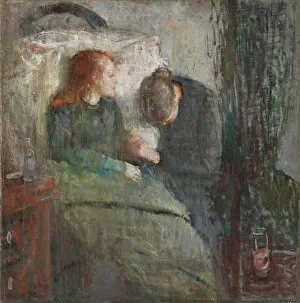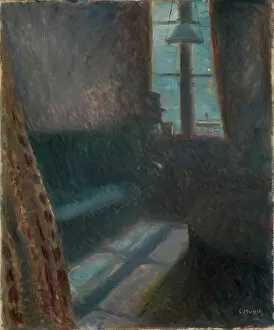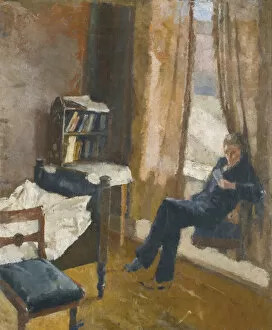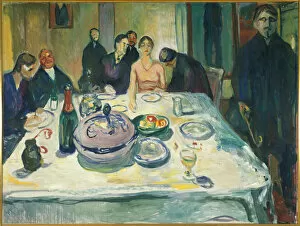Edvard 1863 1944 Collection (#4)
Edvard Munch (1863-1944) was a renowned Norwegian artist whose works continue to captivate audiences with their emotional intensity and raw expression
For sale as Licensed Images
Choose your image, Select your licence and Download the media
Edvard Munch (1863-1944) was a renowned Norwegian artist whose works continue to captivate audiences with their emotional intensity and raw expression. His art, spanning various mediums including painting, printmaking, and sculpture, delves into the depths of human experience. One of his most famous paintings is "The Scream, " created in 1893. This iconic piece depicts a figure on a bridge, hands clutching its face in anguish as the world around it swirls with vibrant colors and has become an enduring symbol of existential dread and anxiety. Another notable work by Munch is "The Vampire II" from 1895-1900. In this haunting portrayal of love and pain, he explores themes of desire and vulnerability through the image of a woman embracing her lover while seemingly draining his life force. Munch's exploration of love continues in "The Kiss" from 1895 and again in 1906-1907. These pieces depict passionate embraces between couples but also hint at feelings of longing or separation beneath the surface. In contrast to these intimate scenes, Munch also captures moments of solitude and introspection. "Young Woman on the Beach" portrays a solitary figure lost in thought against the backdrop of crashing waves, while "Puberty" delves into the complexities surrounding adolescence through symbolism and psychological tension. Munch's landscapes are equally evocative; they often convey emotions through color choices and brushstrokes rather than literal representation. Works such as "Snowmelt near Elgersburg" transport viewers to serene winter scenes where nature undergoes transformation alongside human experiences. Through his diverse body of work, Edvard Munch invites us to confront our deepest fears, desires, joys, and sorrows. He challenges us to delve into our own inner worlds while simultaneously connecting with universal human emotions—a testament to his lasting impact on art history.

